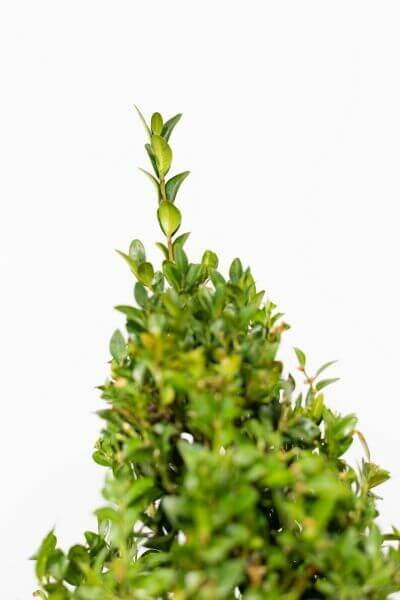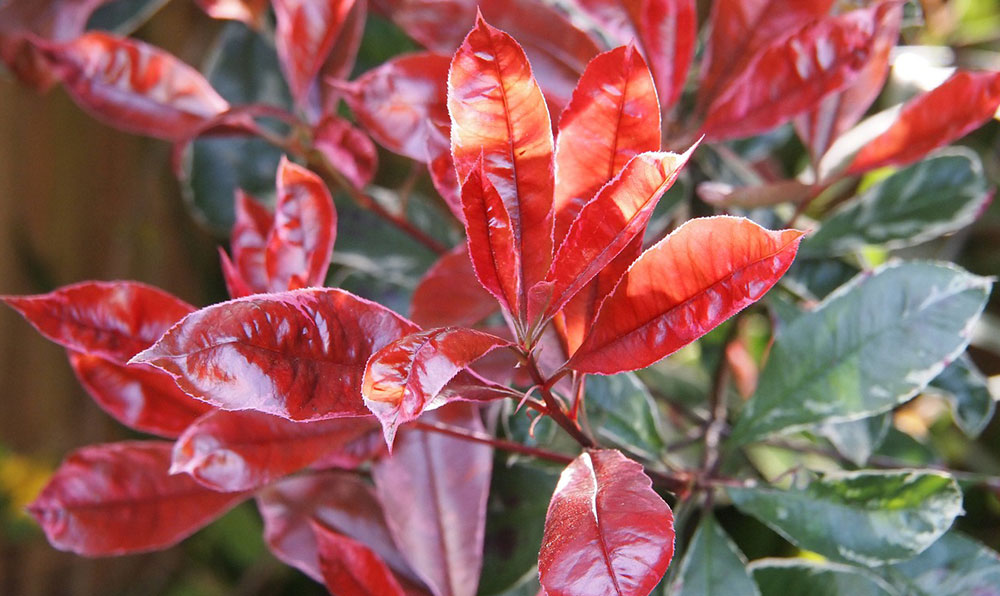Hedge Plants For Classic Borders
Boost your garden's attraction with lavish hedge varieties such as Yew (Taxus), Thuja, Laurel, Photinia, and Bamboo, commemorated for their structural integrity and ecological advantages.
Yew and Thuja offer evergreen protection and winter strength, while Laurel provides fast growth and broad, aromatic leaves.
Photinia adds seasonal charm with its vibrant red foliage, and Bamboo lends a low-maintenance, peaceful ambiance.
These hedges improve air quality, reduce noise, and produce tranquil, private areas.
Proper planting, spacing, and maintenance guarantee energetic growth and environmental consistency.
Explore how these rich ranges can raise your garden's appeal and well-being.
Key Takeaways
Change Your Garden With Lush Hedge Varieties
- Select Yew for its dense, evergreen development and unparalleled longevity.
- Go with Laurel for its fast growth and broad leaves, guaranteeing quick personal privacy.
- Pick Photinia for its lively seasonal foliage, which turns a striking dark red.
- Utilize Bamboo for a low-maintenance, winter-hardy hedge with aesthetic appeal.
- Space plants 2-3 per meter and prune routinely for optimum development and health.
Popular Hedge Plants
When changing a garden with lavish hedge varieties, it's vital to consider popular hedge plants such as Yew, Thuja, Laurel, and Photinia due to their special qualities and benefits.
Yew (Taxus) is highly respected for its durability and thick, green growth, making it a prime choice for withstanding landscapes.
Thuja is kept in mind for its evergreen foliage and robust winter season durability.
Photinia includes seasonal vibrancy with red leaves that darken with time, creating dynamic visual appeal.
Laurel uses quick development and aromatic, broad leaves, perfect for fast personal privacy.
In Addition, Bamboo is an exceptional option for atmosphere, using a low-maintenance, winter-hardy option that enhances the garden's visual with its sophisticated, swaying walking canes.
These selections cater to a range of horticultural requirements and preferences.
Advantages of Garden Hedges
Garden hedges provide a wide variety of benefits, making them an important addition to any landscape. These natural barriers are cost-efficient to execute and provide substantial wind security, enhancing air circulation and adding to noise decrease. The thick foliage of hedges like Thuja and Beech ensures personal privacy by blocking visibility, developing a peaceful and secluded environment.
Hedges likewise play an essential role in microclimate guideline, offering a steady environment that promotes plant growth and lessens temperature variations. Their elaborate leaf structures filter toxins, improving air quality and adding to a healthier garden environment.
Furthermore, hedges master noise decrease, soaking up and deflecting sound waves to lower ambient sound levels. This dual functionality of supplying both acoustic and visual personal privacy improves the total tranquility and aesthetic appeal of any garden.
Planting and Upkeep Tips
For a successful hedge, precise preparation of the planting location is crucial. Guarantee the soil has correct pH and drainage to support strong root development.
Area the plants properly for the selected types. Water the hedge regularly throughout its initial development phase, changing as required with seasonal modifications.
Carry out a methodical insect control and illness prevention method, using organic or chemical treatments when necessary. Routinely check for aphids, mites, and fungal infections.
Apply mulch to retain wetness and suppress weeds. Seasonal pruning promotes dense development and air circulation, necessary for plant health.
Following these standards will help you cultivate a dynamic, properly maintained hedge that improves the beauty of your garden.
Spacing and Trimming Guidelines
Spacing and Cutting Standards
Proper spacing and trimming are crucial for cultivating healthy, visually appealing hedges. Adequate spacing makes sure each plant gets sufficient nutrients, light, and airflow.
Follow these standards for ideal hedge maintenance:
- Spacing: Position hedge plants 2-3 plants per meter to motivate robust development.
- Pruning Strategies: Regular pruning is vital for preserving preferred hedge height and shape. Cut new growth in summer season and cut back older wood during winter.
- Seasonal Care: Change cutting methods and schedules according to seasonal requirements to ensure plant health.
- Hedge Height: Regularly monitor and trim to maintain the desired hedge height and achieve uniform aesthetic appeals.
Abiding by these steps will ensure your hedge thrives, boosting both the appeal and functionality of your garden.
Picking the Right Hedge
Selecting the Right Hedge
Selecting the appropriate hedge includes evaluating get more info factors such as fully grown height, foliage density, and ecological resilience. Effective hedge plant choice requires understanding each species' growth characteristics and site-specific adaptability.
For instance, Yew (Taxus) provides outstanding longevity and dense development, while Thuja is notable for its winter season resilience. In addition, thinking about maintenance requirements is crucial; fast-growing types like Laurel or Privet demand regular cutting, whereas low-maintenance options like Bamboo or Ivy may be preferable for those seeking minimal upkeep.
Ecological aspects such as soil type, light accessibility, and moisture conditions must likewise assist the selection procedure. This cautious technique guarantees the selected hedges will flourish, offering both functional and aesthetic advantages to the garden landscape.
Delivery and Planting Advice
To ensure your hedge plants prosper, they need to be delivered by specialized carriers and planted quickly upon arrival.
Follow these necessary steps for effective planting:
- Soil Preparation: Improve the soil with organic matter to improve drain and nutrient material.
- Planting Depth: Develop a trench twice the width and equal to the depth of the root ball.
- Watering Strategies: Water completely after planting, keeping the soil consistently damp however not filled.
- Mulching: Use a layer of mulch to retain wetness and reduce weeds.
Customer Support and Service
Provided the crucial role of prompt help in horticultural pursuits, our consumer assistance team is available six days a week through telephone, e-mail, and social media to offer professional recommendations and promptly resolve any issues. Their dedication to quick response times ensures customer complete satisfaction by fixing inquiries connected to plant health, ideal planting approaches, and upkeep schedules.

Reaction Time
-----------------
Telephone
Six days a week
Within 24 hr
This thorough assistance system, enhanced by a stellar 9.3/ 10 customer score, highlights our commitment to improving the gardening experience for every single customer.
Regularly Asked Questions
How Long Does It Take for Hedge Plants to Establish?
Hedge plants normally need one to 3 years to end up being completely developed, with the specific period differing by types and growing conditions.
Reliable care throughout this vital duration is vital for robust growth. Consistent watering, vigilant weed control, and appropriate fertilizer application are pivotal in promoting strong root advancement.
For instance, fast-growing types like Laurel might establish more quickly, while slower-growing varieties such as Yew may take longer. Thorough upkeep speeds up the facility process, resulting in thick and healthy hedges.
What Are the very best Hedge Plants for Privacy?
The question of the very best hedge plants for personal privacy involves evaluating evergreen and deciduous options.
Evergreen hedges like Thuja, Laurel, and Cypress supply year-round protection, guaranteeing continuous personal privacy.
In contrast, deciduous hedges such as Beech offer seasonal personal privacy, shedding leaves in chillier months.
Key upkeep ideas for privacy hedges consist of routine trimming, fertilizing in spring, and correct spacing-- usually 2 to 3 plants per meter.
Additionally, constant watering and persistent weed elimination are important for promoting healthy, dense development.
Can Hedge Plants Attract Wildlife to My Garden?
Yes, hedge plants can bring in wildlife to your garden by offering essential advantages like shelter, food, and nesting websites, thus boosting local biodiversity. Yew, holly, and laurel are outstanding for bring in birds, while ivy supports a variety of pests.
However, it's crucial to note that there are some disadvantages, such as increased upkeep to manage bugs and regular maintenance. Thoroughly picking and maintaining hedge ranges can help balance these advantages and drawbacks, ultimately promoting a lively and sustainable community in your garden.
Exist Any Blooming Hedge Plants Available?
Yes, there are flowering hedge plants offered that can improve the appeal of your garden.
For example, Elaeagnus, also understood as Olive Willow, produces aromatic white flowers in the fall, adding a touch of elegance.
Photinia, another popular choice, showcases lively red leaves that grow into an abundant green, creating a dynamic visual impact throughout the seasons.
To make sure these plants thrive, it's vital to practice appropriate pruning strategies and seasonal upkeep, such as cutting new growth in the summer and cutting back in the winter season.
These steps will assist maintain the health and aesthetic appeal of your blooming hedges.
How Do I Avoid Insects in My Hedge Plants?
To avoid bugs in hedge plants, use natural bug control approaches and keep correct hedge care. Present beneficial pests like ladybugs, which prey on harmful bugs, to develop a well balanced environment.
Regularly check your hedges for indications of infestation and quickly eliminate any affected parts to prevent the spread. Ensure the health of your hedges by applying balanced fertilizers and providing adequate water.
Utilize mulching to maintain soil wetness and correct spacing to minimize plant stress and promote robust growth. These practices collectively assist in decreasing bug problems and maintaining a healthy hedge.
Conclusion
In essence, choosing the ideal hedge ranges such as Yew, Thuja, and Laurel can transform any garden into a tranquil sanctuary. These plants offer year-round greenery, boost aesthetic appeal, and offer useful benefits like noise reduction and wind defense.
Correct planting methods, accurate spacing, constant watering, and seasonal trimming are essential for ideal growth.
Dependable shipment services and professional customer assistance guarantee a smooth experience from purchase to planting, making it simpler than ever to raise your outdoor area.
Garden hedges provide a multitude of advantages, making them a valuable addition to any landscape. These natural barriers are cost-effective to execute and provide substantial wind protection, boosting air circulation and contributing to sound reduction. The thick foliage of hedges like Thuja and Beech ensures personal privacy by blocking exposure, developing a secluded and peaceful environment.

Pruning Methods: Regular pruning is essential for keeping preferred hedge height and shape. Trim brand-new growth in summer and cut back older wood throughout winter.